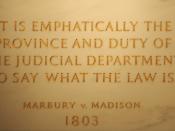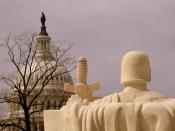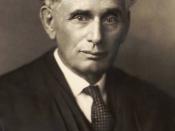Mr. McKiernan has on occasion reminded us, "The constitution has adapted to changing circumstances over the years because of certain provisions built into it". This is true and necessary. As need arises, the constitution has had to mold itself to the ever altering society we embrace. As times change, flexibility becomes a must, and that's why the elastic clause, the amendment process, and judicial review are in effect. Marbury v. Madison, an early Supreme Court establishes the power of judicial review. The Louisiana Purchase illustrates the use of the elastic clause and; in Brown v. Board, another Supreme Court case, the amendment process and how it may become necessary to "fix" the constitution.
In Marbury v. Madison, a man named William Marbury was appointed to a Supreme Court position during the end of the Adam's Presidency. His job and those of other men in the same predicament were never finalized by the newly sworn in president, Jefferson.
The men sued for their jobs and the question that presented itself, to the Supreme Court, was whether their argument was valid. The justices held, through a forceful wrangle, that the Constitution was the highest law in the land and that an act of legislature that contradicts the constitution in invalid. According to Mr. McKiernan's Constitutional Monarchy Steps when two laws bisect each other on the steps the higher power wins (the Constitution will always win. It's on the highest step). The Supreme Court ruled that it could not force the legislative or executive branch to do anything, but established a new power for itself called judicial review or the power to interpret the Constitution. It in this case found Marbury's argument valid and said it was unconstitutional of the new presidency to not finalize the men's positions. This shows our...


